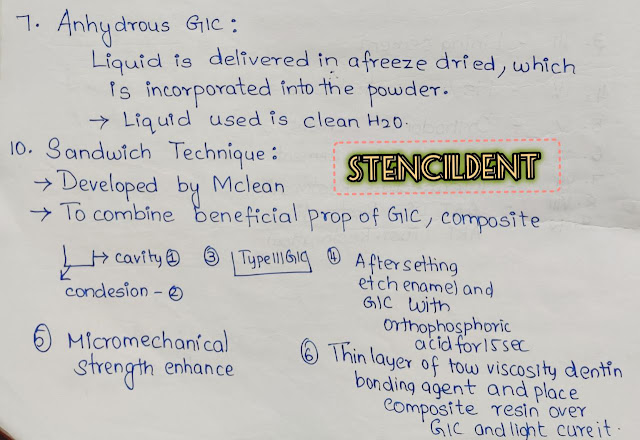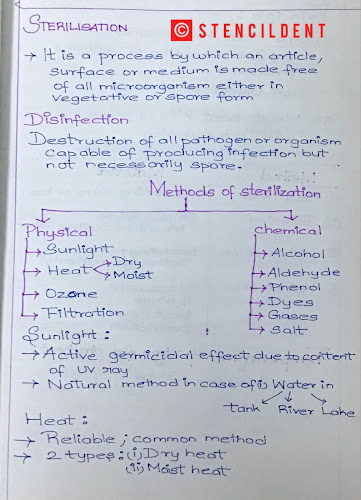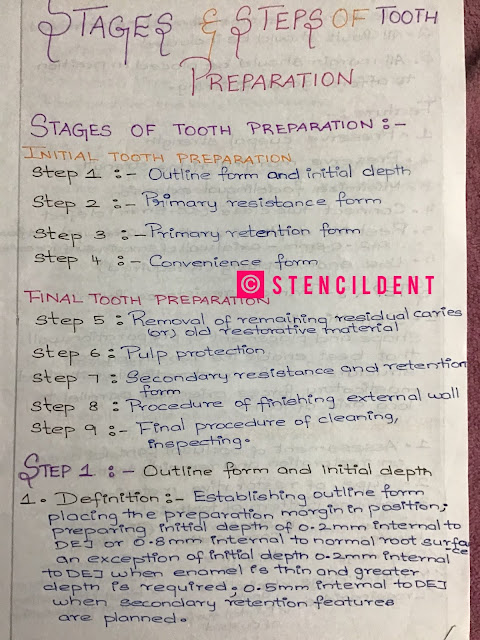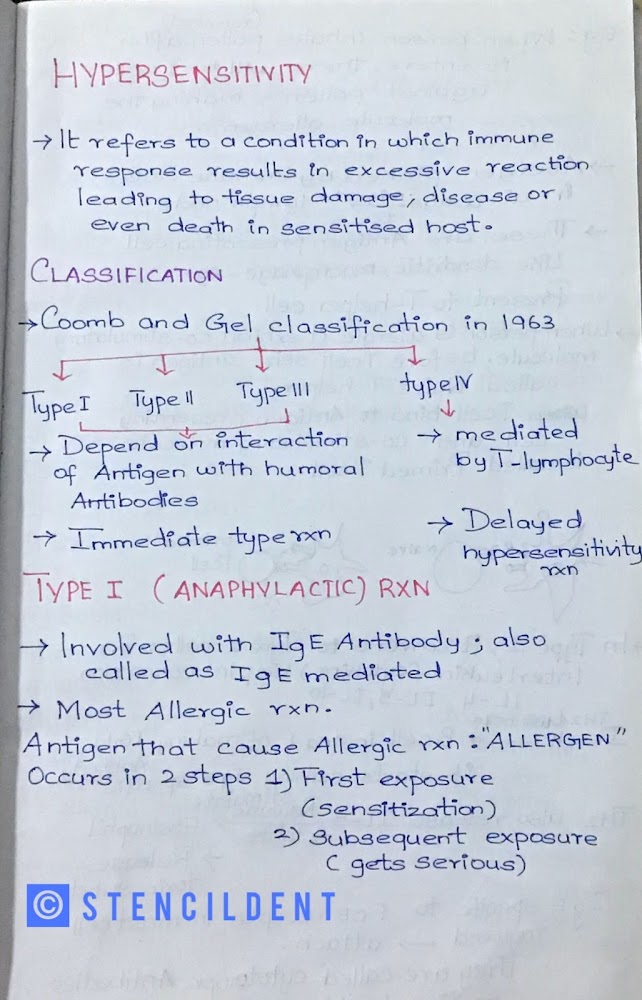Glass ionomer cement -most frequently asked viva question along with answers
GLASS IONOMER CEMENT :
MOST FRQUENTLY ASKED VIVA QUESTIONS:
1)DEFINE GLASS IONOMER CEMENT?
A cement that consists of basic glass and acid polymer which sets by an acid -base reaction between these components .
2)Who discovered glass ionomer cement?
Wilson and Kent in 1972
3) Other name of glass ionomer cement ?
ASPA -Alumino silicate polyacryate
4)Composition:
Powder :
Silica-35-40%
Alumina-20-30%
Calcium fluoride-15-20%
Aluminum fluoride-1.5-2.5%
Aluminium phosphate-9-8%
Sodium fluoride-5%
liquid:
Polyacrylic acid-40-50%
Itaconic acid, malic acid and tartaric acid -5%
Water-45-50%
5)Classification:
A)according to Wilson and Kent:
Type 1- luting cement
Type 2 -restorative
Type 2 a -Restorative aesthetics
Type 2b- Restorative reinforced
B)According to application:
Type 1 -Luting
Type 2 -Restorative
Type 2 a -Restorative aesthetics
Type 2b- Restorative reinforced
Type 3-Lining cement
Type4- Fissure cement
Type 5- Orthodontic cement
Type 6-Core build cement
Type 7 - Intermediate restoration
Type8- Atraumatic restorative treatment (anterior restoration)
Type 9 - atraumatic restorative treatment (posterior restoration)
General types :
1.Reinforced
2.Resin modified -
Improved handling and character
Less technique sensitive
3.Compomer
4.Atraumatic restorative treatment
5.Giomer
6) Setting Reaction:
Sets via- acid-base reaction
Steps :
1)Decomposition:
The acidic liquid solution (pH=1) dissolve periphery of silicate glass particle releasing calcium, aluminum ,fluoride ,silicon and other ion.
2)MIGRATION:
Calcium ions are chelated quickly by the carboxyl side groups on polyacrylic acid polymer chain
3)GELATION:
Cross linking by polyacrylic acid chain takes place proceeding as amorphous gel matrix
👇
During next 24-72 hours ,the calcium ions are replaced by more slowly reacting aluminium ion to produce a more highly cross linked mechanical stronger
👇
During this time ,silicon ion and unbound water produce inorganic co-matrix -hydrated silicate
👇
Same carboxyl acid side group are also capable of chelating this
This process generate true chemical bond at intrinsic and extrinsic interface when reaction condition is correct .
Bonding :
- Bond to enamel and dentin through ionic interaction
- Polyacrylic acid(hydroxyl group)- enamel, dentin
7)MIXING TIME ,WORKING TIME,SETTING TIME ?
MIXING TIME :45-60SEC
WORKING TIME-2 MINUTE
SETTING TIME - 5-7 MINUTE -TYPE 1
10 MINUTE - TYPE 2
8)COMPRESSIVE STRENGTH,TENSILE STRENGTH ?
COPRESSIVE STRENGTH -60-300MPA
TENSILE STRENGTH GIC TYPE 9 - 12.61MPA
9)Role of water in setting reaction :
- Reaction medium into which the cement forming cations are leached and transported to react with polyacid to form a matrix
- Hydrates siliceous hydrogel and metal polyacrylate salts are formed
- loosely bond water - readily removed by desiccation
- tightly bond water-cannot be removed and is associated with hydration shell of cation (alumina ,silica gel ,water )
- With aging ,tightly bound water increases ,increases strength where as modulus of elasticity and plasticity decreases
- high humidity -absorb water -hygroscopic expansion
- dry humidity-loss water-shrinking ,crazing
10)Anhydrous glass ionomer cement?
- liquid is delivered in freeze dried ,which is incorporated into the powder ,liquid used in clean water
11)FACTORS affecting setting reaction ?
- Glass composition -Increased alumina -silica ratio-increased setting time time
- Particle size-fine powder increased setting time
- Addition of tartaric acid
- Relative proportion of constituent
- Temperature
12)Sandwich technique?
- Developed by Mclean ,to combine beneficial property of glass ionomer cement and composite
Steps:
Step1- Conservative cavity preparation
Step 2- Dentin conditioning
Step 3- Type 3 glass ionomer cement base
Step4- After setting etch enamel ,glass ionomer cement with orthophosphoric acid for 15 seconds
Step5- Micromechanical strength enhances ,then thin layer of low viscosity dentin bonding agent and place composite resin over glass ionomer cement and light cure it .
13)Dentin conditioning :
- Done to remove smear layer
- GIC has better ability to wet dentin surface
- Promotes ion exchange
- Chemically clean dentin
- Increased surface energy
14)contra-indication of glass ionomer cement :
- Class4 caries lesion
- Class 2 caries lesion where conventional cavities are prepared
- Lost cusp areas
15)RMGIC INDICATION:
- Luting cement especially in orthodontics
- liners,base
- Pit and fissure sealant
- For amalgam repair
Conclusion:
vanakam my dear stencildent family members hope you liked this post on glass ionomer cement ,as per a dear subscribers request we have started to post dental cements starting with 1st post on zinc-phosphate cement followed by post on zinc polycarboxylate cement if it helped you learn then do let me know in the comment section below .
THANK YOU
CONTAT DETAILS :
EMAIL : stencildent@gmail.com
Instagram: stencildent












Comments
Post a Comment